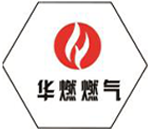
Nov . 16, 2024 02:01
Back to list
pneumatic valve
Understanding Pneumatic Valves A Key Component in Automation
Pneumatic valves are essential components in various industrial and automation processes, controlling the flow and pressure of compressed air within pneumatic systems. These valves act as the gatekeepers of air movement, facilitating the operations of machinery, tools, and equipment used in diverse sectors such as manufacturing, construction, and process engineering. To better understand their function and significance, it is crucial to explore how pneumatic valves work, their various types, applications, and the advantages they offer.
How Pneumatic Valves Work
Pneumatic valves operate on the principle of controlling the movement of air. Compressed air is directed into a system through a compressor and subsequently regulated by valves. When a valve opens, it allows air to flow through, causing actuators, such as cylinders or motors, to operate. Conversely, when the valve closes, the air flow is halted, stopping the operation. The action of the pneumatic valve can be controlled manually, electrically, or pneumatically, depending on the system design and requirements.
Types of Pneumatic Valves
There are several types of pneumatic valves, each serving different functions and applications
1. Directional Control Valves These valves manage the direction of airflow in a system. They can be four-way or three-way valves depending on the complexity of the operation. Four-way valves, for instance, are commonly used to control double-acting cylinders, enabling forward and backward movement.
2. Pressure Control Valves These are designed to manage the pressure within a pneumatic system, preventing overpressure and ensuring safe operation. They include pressure relief valves that automatically release air when a specified pressure threshold is exceeded.
3. Flow Control Valves Flow control valves regulate the speed of actuators by controlling the amount of airflow entering or exiting a device. By adjusting these valves, operators can manipulate the speed of operations of cylinders and other devices to achieve desired performance.
pneumatic valve

4. Shut-off Valves These valves function to stop or allow the flow of air in a system. They are vital for isolating sections of pneumatic systems during maintenance or in emergencies.
Applications of Pneumatic Valves
Pneumatic valves find applications in diverse industries. In manufacturing, they are utilized in assembly line automation, often controlling robots and automated machinery. In the automotive industry, pneumatic valves facilitate the operation of tools and equipment for the manufacturing and assembly of vehicles. Additionally, they play a critical role in material handling systems, where they control conveyor belts and other mechanisms that move products.
In the pharmaceutical and food industries, pneumatic valves are crucial for maintaining hygiene and compliance with safety standards. They control the dispensing of air into sensitive production areas, ensuring sterile conditions and the integrity of products.
Advantages of Pneumatic Valves
Pneumatic valves offer numerous advantages that make them a preferred choice in industrial applications. They are relatively simple in design, which minimizes maintenance requirements and downtime. Additionally, pneumatic systems typically operate at lower costs compared to hydraulic systems, as compressed air is readily available and inexpensive to produce.
Pneumatic valves also provide swift response times, allowing for rapid operation in high-speed environments. Moreover, they possess high reliability and robustness, making them suitable for challenging operating conditions.
Conclusion
In summary, pneumatic valves are vital components in modern automation and industrial operations. Their ability to control the flow and pressure of compressed air allows for efficient management of various tasks, enhancing productivity and safety in numerous applications. As industries continue to embrace automation, the importance of pneumatic valves in achieving reliable and efficient systems will only continue to grow. Understanding their functionality, types, applications, and advantages is essential for professionals working with pneumatic systems, ensuring optimal performance and longevity.
Next:
Latest news
-
Safety Valve Spring-Loaded Design Overpressure ProtectionNewsJul.25,2025
-
Precision Voltage Regulator AC5 Accuracy Grade PerformanceNewsJul.25,2025
-
Natural Gas Pressure Regulating Skid Industrial Pipeline ApplicationsNewsJul.25,2025
-
Natural Gas Filter Stainless Steel Mesh Element DesignNewsJul.25,2025
-
Gas Pressure Regulator Valve Direct-Acting Spring-Loaded DesignNewsJul.25,2025
-
Decompression Equipment Multi-Stage Heat Exchange System DesignNewsJul.25,2025

